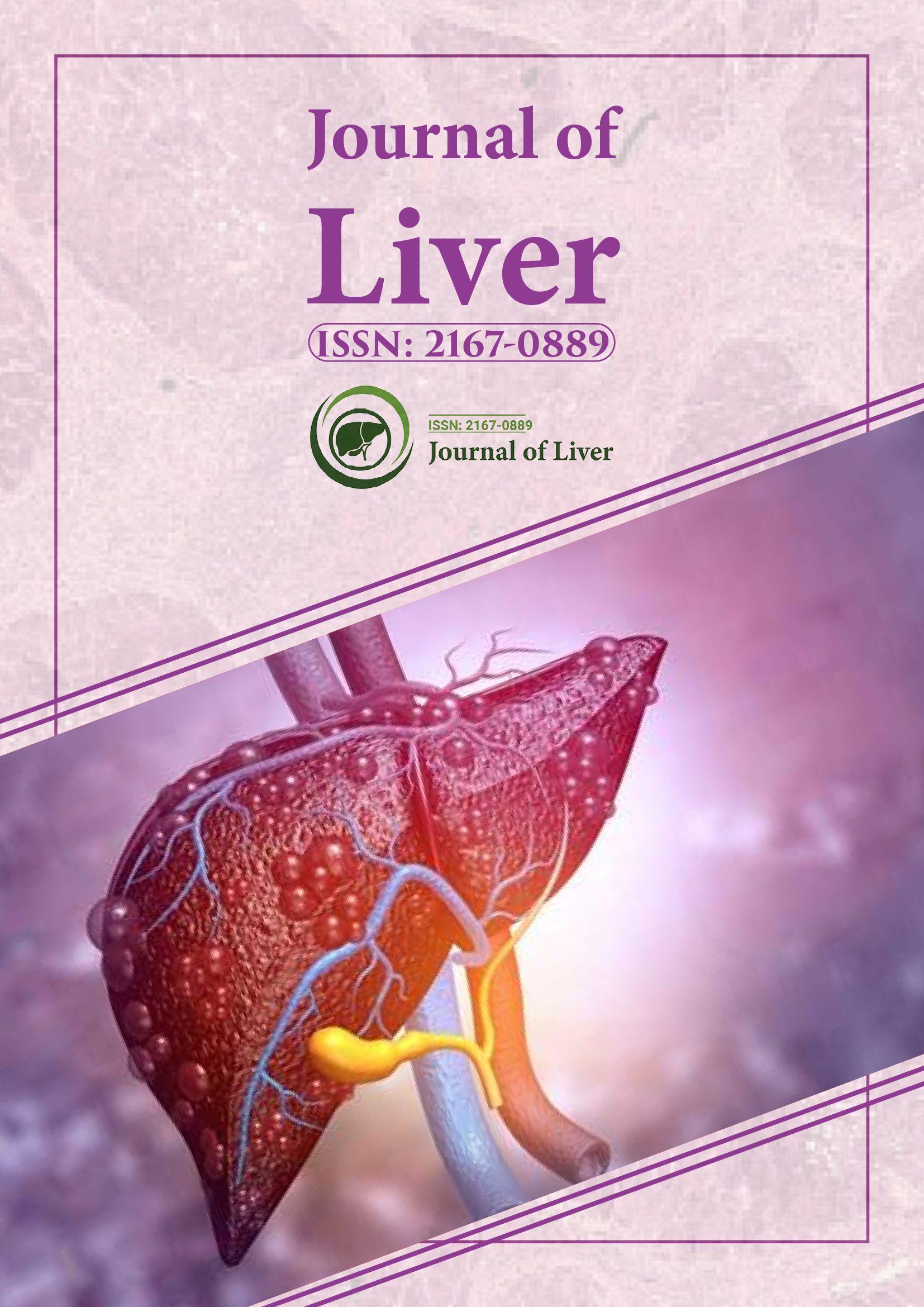Indexed In
- Open J Gate
- Genamics JournalSeek
- Academic Keys
- RefSeek
- Hamdard University
- EBSCO A-Z
- OCLC- WorldCat
- Publons
- Geneva Foundation for Medical Education and Research
- Google Scholar
Useful Links
Share This Page
Journal Flyer

Open Access Journals
- Agri and Aquaculture
- Biochemistry
- Bioinformatics & Systems Biology
- Business & Management
- Chemistry
- Clinical Sciences
- Engineering
- Food & Nutrition
- General Science
- Genetics & Molecular Biology
- Immunology & Microbiology
- Medical Sciences
- Neuroscience & Psychology
- Nursing & Health Care
- Pharmaceutical Sciences
Commentary - (2025) Volume 14, Issue 1
Thyroid Function in Cases of Biopsy-Verified Metabolic Liver Involvement
Quentin Ratziu*Received: 25-Feb-2025, Manuscript No. JLR-25-29109; Editor assigned: 27-Feb-2025, Pre QC No. JLR-25-29109 (PQ); Reviewed: 13-Mar-2025, QC No. JLR-25-29109; Revised: 20-Mar-2025, Manuscript No. JLR-25-29109 (R); Published: 27-Mar-2025, DOI: 10.35248/2167-0889.25.14.249
Description
Metabolic dysfunction-Associated Steatohepatitis (MASH), previously categorized under Non-Alcoholic Steatohepatitis (NASH), is a progressive liver disease that arises in the setting of metabolic abnormalities such as obesity, insulin resistance, dyslipidemia, and hypertension. MASH is characterized histologically by hepatic steatosis, inflammation, hepatocyte ballooning and varying degrees of fibrosis. The progression from simple steatosis to MASH significantly increases the risk of cirrhosis, hepatocellular carcinoma, and liver-related mortality.
Recent research has drawn attention to the role of endocrine and hormonal systems in liver health, particularly the influence of thyroid hormones. Thyroid hormones play a significant part in lipid metabolism, energy balance, mitochondrial function and insulin sensitivity. Thus, disruptions in thyroid hormone levels may affect hepatic fat accumulation and the progression to MASH.
Thyroid hormones
Thyroid hormones, including thyroxine (T4) and triiodothyronine (T3), regulate several physiological processes that are interconnected with hepatic function. The liver plays an essential role in the conversion of T4 to the active T3 and is involved in hormone clearance and receptor-mediated signaling. Conversely, altered thyroid function can influence lipid metabolism and hepatic fat deposition.
Hypothyroidism has been implicated in increased hepatic triglyceride accumulation, reduced β-oxidation and impaired cholesterol clearance. Subclinical thyroid dysfunction may also have metabolic effects that contribute to MASH development. However, the extent to which these hormonal changes influence the histopathological features of MASH remains under investigation.
Association with metabolic parameters
Hypothyroid groups displayed higher fasting glucose, HOMA-IR index and LDL cholesterol levels. Triglycerides were elevated across all groups but were most pronounced in overt hypothyroidism.
The findings of this study support a significant association between thyroid dysfunction particularly hypothyroidism and the severity of MASH. Patients with elevated TSH levels, even in the subclinical range, exhibited more advanced histological damage and metabolic abnormalities. Several mechanisms may explain this relationship.
Altered lipid metabolism: Hypothyroidism is associated with decreased lipolysis, reduced expression of hepatic LDL receptors and impaired triglyceride clearance. These changes promote lipid accumulation within hepatocytes.
Insulin resistance: Thyroid hormone deficiency has been linked to decreased insulin sensitivity. Since insulin resistance is a central feature of MASH pathogenesis, its exacerbation in hypothyroid states could contribute to disease progression.
Inflammatory pathways: Animal studies have shown that thyroid hormone suppression can upregulate pro-inflammatory cytokines and oxidative stress markers, both of which are implicated in hepatic injury.
Mitochondrial dysfunction: Thyroid hormones influence mitochondrial biogenesis and oxidative phosphorylation. Impairment in these pathways can lead to increased hepatocellular stress and apoptosis.
While this study supports the role of thyroid status in MASH, it is important to recognize the bidirectional relationship between liver and thyroid. Liver disease itself can alter thyroid hormone metabolism, especially by reducing conversion of T4 to T3. Thus, thyroid hormone levels should be interpreted cautiously in the setting of hepatic dysfunction.
Clinical implications
The observation that subclinical hypothyroidism may correlate with worse MASH histology highlights the need for routine thyroid function testing in patients with suspected or confirmed MASH. Early identification of thyroid dysfunction may guide interventions, such as: Thyroid hormone replacement in overt hypothyroidism Closer monitoring of liver disease progression in patients with abnormal thyroid profiles Lifestyle interventions that address both metabolic and endocrine factors
Moreover, in selected patients, thyroid hormone analogs that specifically target hepatic lipid metabolism are under investigation and may provide future therapeutic options. This study demonstrates a clear association between serum thyroid hormone levels and the severity of metabolic steatohepatitis. Both subclinical and overt hypothyroidism are linked with more advanced liver histology and metabolic derangements. Recognizing thyroid dysfunction in patients with MASH can support earlier identification of at-risk individuals and inform multidisciplinary treatment strategies. Continued research into the interplay between thyroid and hepatic function is essential for refining both diagnostic and therapeutic approaches in metabolic liver disease.
Citation: Ratziu Q (2025). Thyroid Function in Cases of Biopsy-Verified Metabolic Liver Involvement. J Liver. 14:249.
Copyright: © 2025 Ratziu Q. This is an open-access article distributed under the terms of the Creative Commons Attribution License, which permits unrestricted use, distribution, and reproduction in any medium, provided the original author and source are credited.
